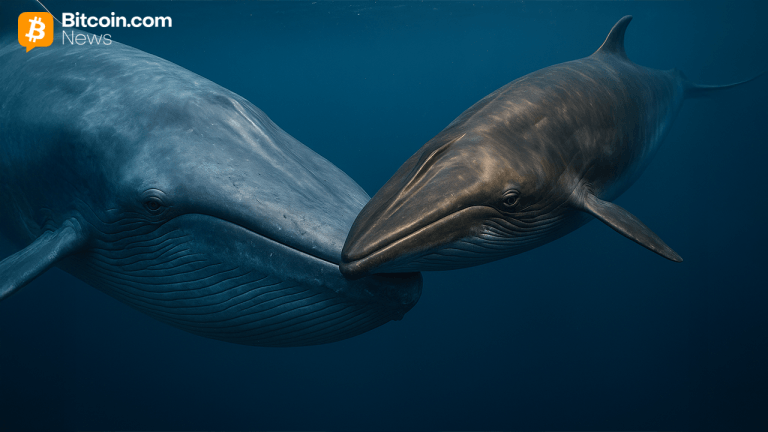Ethereum's "double crisis": core talent continues to leave, and technical debt quietly accumulates
By Eric, Foresight News On the evening of the 19th Beijing time, Bankless co-founder David Hoffman posted a message on X to "mourn" Dankrad Feist, the longest-serving researcher at the Ethereum Foundation, who chose to leave Ethereum and join the stablecoin L1 Tempo. David Hoffman believes the issue of for-profit companies co-opting the talent cultivated by the Ethereum open-source community is significant, and argues that these companies do not, as they claim, bring greater benefits to Ethereum. He bluntly stated, "In my view, Tempo's purpose is to intercept the trillions of dollars in stablecoins expected to flow in over the next decade and place them on their private blockchain. While this will certainly expand the market, Tempo still intends to grab as much of the pie as possible." He believes Tempo will inevitably be constrained by compliance issues, which even issuing tokens cannot address. While both Tempo and Ethereum will bring change to the world, Ethereum is uniquely suited to serve as a trusted, neutral global settlement layer, without shareholders and unconstrained by law. The feeling of disappointment with Ethereum began to surface when its price began to lag behind Bitcoin's in this cycle. However, over time, people began to realize that the exodus of talented individuals from the Ethereum community seemed irreversible. When dreams conflicted with self-interest, many ultimately chose the latter, a fact that many in the industry have long worried about. Dankrad Feist is not the first and will not be the last Dankrad Feist announced his joining Tempo at X on the 17th of this month and stated that he would continue to serve as a research advisor for the Ethereum Foundation's Protocol Cluster's three strategic initiatives: scaling Layer 1, scaling Blobs, and improving user experience. He stated, "Ethereum has strong values and technology choices that make it unique. Tempo will be a great complement, building on similar technology and values while pushing boundaries in scale and speed. I believe this will be a significant benefit to Ethereum. Tempo's open-source technology can be easily integrated back into Ethereum, benefiting the entire ecosystem." According to LinkedIn, Dankrad Feist officially joined Ethereum as a researcher in 2019, focusing on sharding technology, which can scale the Ethereum mainnet. Danksharding, one of the core components of Ethereum's current scaling roadmap, is named after him. Danksharding is a key technical path for Ethereum to achieve high-throughput and low-cost transactions, and is widely considered by the community to be the most important upgrade direction after Ethereum 2.0. Dankrad Feist promoted Proto-Danksharding (EIP-4844), a predecessor of Danksharding. This EIP introduced the blob transaction type, providing a cheaper and more efficient data availability layer for Rollup, significantly reducing the data publishing cost of Rollup. In addition, he had a public debate with Geth development lead Péter Szilágyi on the MEV issue, which eventually prompted Vitalik to step in to coordinate and promote the community's attention to MEV mitigation mechanisms (such as PBS, Proposer-Builder Separation). Tempo researcher Mallesh Pai introduced the members joining Tempo in September, and Liam Horne, former CEO of OP Labs and co-founder of ETHGlobal, also appeared on the list. Before Dankrad Feist, the person who surprised the industry was Danny Ryan, who co-founded Etherealize, a $40 million funding round. A former core member of the Ethereum Foundation and known as the "Chief Engineer of Ethereum 2.0," Ryan joined Etherealize just six months after announcing his indefinite departure in September 2024. However, given that Etherealize shares similarities with ConsenSys, founded by Ethereum co-founder Joseph Lubin 11 years prior amidst controversy over commercialization, Ryan's departure has been widely understood. What really worries David Hoffman are companies like Tempo and Paradigm. Well-known Ethereum developer Federico Carrone expressed a similar sentiment, retweeting David Hoffman's tweet about Dankrad Feist joining Tempo and stating that he has been saying for the past two years that Paradigm's influence within Ethereum could become a tail risk for the entire ecosystem. Federico Carrone wrote that the sole goal of a venture capital fund is to maximize returns for its limited partners. Ethereum shouldn't become deeply dependent on the technology of a venture capital firm that is playing its cards with extreme strategic skill. Following the FTX debacle, Paradigm removed nearly all cryptocurrency-related branding and made a high-profile shift to AI. Carrone believes this is proof enough of his point. After Trump returned to the White House, Paradigm re-entered the Web3 space, aggressively recruiting top researchers from the community, funding key Ethereum open-source libraries, and supporting Stripe's launch of Tempo. Carrone believes that while Paradigm claims its work is beneficial to Ethereum—more funding, more tools, more testing grounds, and the potential for new ideas to feed back into Ethereum—are all potential benefits, but when corporations have excessive visibility and influence over open-source projects, priorities shift from the community's long-term vision to corporate profits. Ethereum’s technical debt is accumulating The simple loss of talent in the Ethereum open source community may not cause widespread concern, but if the loss of talent is accompanied by the accumulation of technical debt, it is worthy of high vigilance. A week ago, a community user posted a screenshot on X, revealing that Solidity's top contributors have all but ceased development. Only Cameel continues to raise new issues and advance the technology, but appears to be in maintenance mode. He believes the community needs to invest more resources in supporting the programming language. Some users in the comments questioned why efforts were being expended on continuously improving and upgrading Solidity rather than simply maintaining it to ensure stability and security. The user who tweeted explained that even changing the Solidity compiler wouldn't change any deployed contracts, but could improve security, enhance the development experience, or support the use of new contracts. As can be seen in the chart above, development activity began to decline sharply at the beginning of the previous bull market. Federico Carrone also expressed his concern, stating that his biggest concern is that the numerous core tools and libraries built around Solidity may not receive long-term maintenance. Even the latest Solidity compiler is currently supported by only a handful of developers. Furthermore, companies involved in L2 and ZK technologies are downsizing, leaving the final iteration of cutting-edge technologies to a handful of companies. With increasing gas limits, many execution clients have not seen substantial performance improvements, and judging by the libraries, the development teams of these clients appear to be lagging behind. Federico Carrone said, “Ethereum’s technical debt continues to accumulate, not only because the protocol itself must continue to evolve, but also because many of its dependencies and surrounding repositories have become stagnant. The entire ecosystem continues to expand, protecting tens of billions of dollars in assets, while part of its foundation is quietly eroding.” Open source communities cannot simply "generate power with love" For an open-source community like Ethereum, which carries a vast amount of value that can be measured in real money, balancing "generate power with love" and economic incentives is a problem without any real precedent. This should be a matter of great concern to the Ethereum Foundation, but it seems to have been overlooked. Péter Szilágyi, who joined the Ethereum Foundation in 2015 and is responsible for the development and maintenance of Geth, clearly pointed out the three most disappointing problems in a letter to the leadership of the Ethereum Foundation a year and a half ago: being portrayed as a leader externally but marginalized internally; the serious disproportion between income and the growth of Ethereum's market value; and Vitalik and a small group of people around him having too much say in the Ethereum ecosystem. In late 2024, Péter Szilágyi discovered that the Ethereum Foundation was secretly incubating an independent fork of Geth. He was subsequently fired due to a dispute with the Ethereum Foundation and repeatedly declined rehire. The Ethereum Foundation even offered Szilágyi $5 million to separate Geth from the Foundation, but was rejected. Currently, Szilágyi maintains the Geth codebase as an independent contributor. Rumors of corruption within the Ethereum Foundation have been circulating, but this is a problem that should have been anticipated from the moment the Ethereum Foundation was founded. As the saying goes, "where there are people, there are gangs." We can't eliminate human greed, but we also can't allow Ethereum to gradually lose its core value due to commercialization. Ethereum's market capitalization of hundreds of billions of dollars, having handled trillions of dollars in on-chain value transfers for years, is built on infrastructure built by a professional technical team, centered on a permissionless, open-source ethos, and commercialized by a large number of businesses. However, simply maintaining such a massive system requires a significant workforce, and as we've discussed, these individuals are leaving due to disappointment or opting for other projects driven by financial gain. The Ethereum Foundation underwent drastic reforms this year, but so far, they haven't produced any significant results. Ethereum can still be called the world's computer, and its potential for commercial applications is still being explored by talented teams. However, as the foundation of all this, Ethereum cannot continue to disappoint those who still hold on to its ideals.


